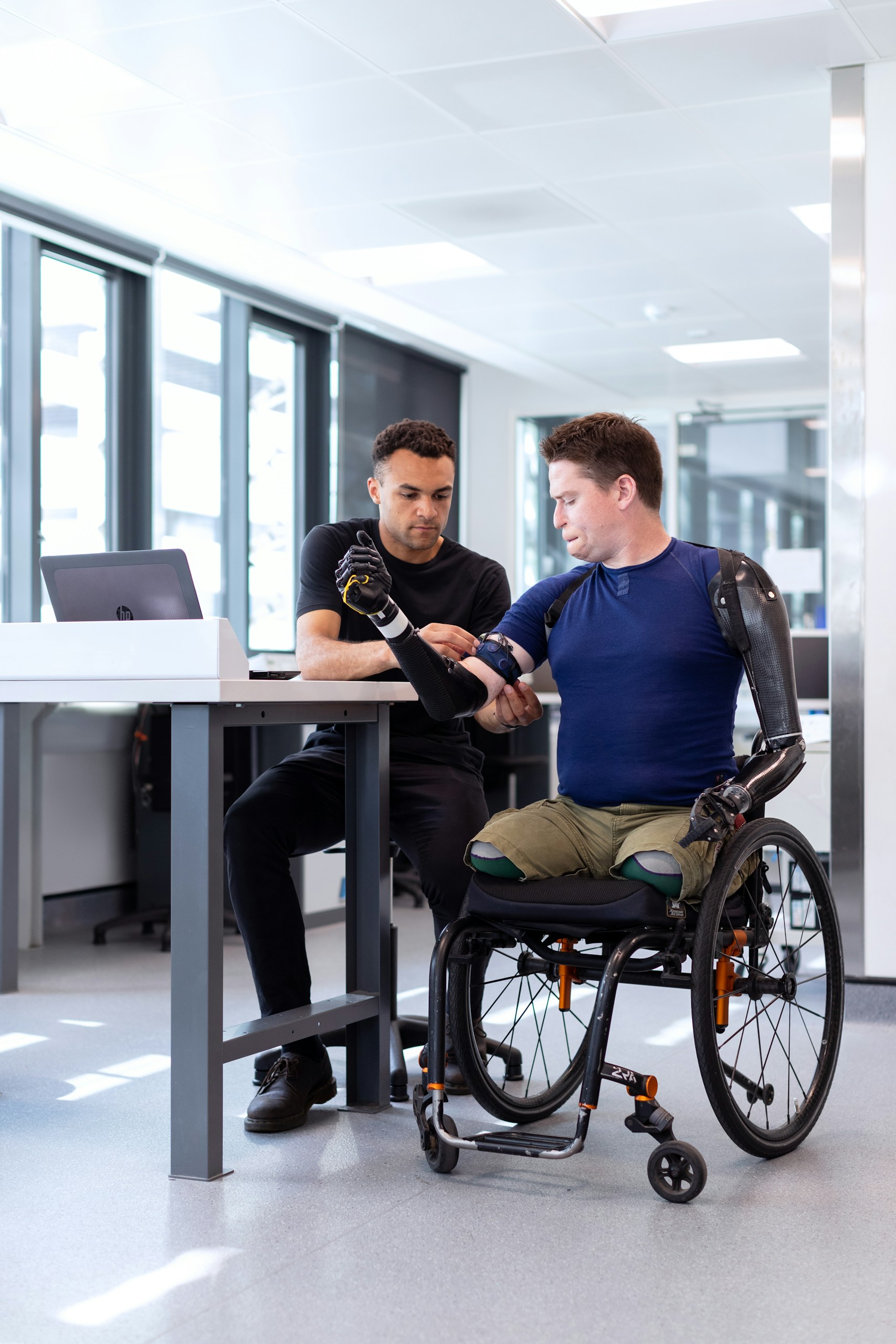Creating inclusive and accessible office spaces is more than just an ethical consideration; it’s a practical imperative. By adopting universal design principles, organisations can create environments that accommodate everyone—regardless of age, physical ability, or sensory needs.
The concept of universal design, originally coined in architecture, has now evolved to encompass all elements of office design, ensuring that spaces are functional, accessible, and welcoming for all individuals. Here’s a look at the importance of universal design and the key principles to consider when creating an inclusive office space.
Why Universal Design Matters in the Workplace
As workplaces become more diverse, it’s essential to create environments that support productivity and well-being for a wide range of individuals. Universal design benefits everyone: employees with disabilities, older workers, parents with young children, and even those without specific needs. Beyond the direct impact on employees, inclusive design also helps organisations attract and retain talent, create a positive corporate culture, and reduce potential legal liabilities related to accessibility standards.
Core Principles of Universal Design for Office Spaces
- Equitable Use
Equitable use is about ensuring that everyone can access and benefit from the environment. This principle emphasises designs that do not segregate or stigmatise any group of users. In an office setting, this might mean incorporating adjustable desks for wheelchair users, hands-free doors, or even providing materials in multiple formats (e.g., braille or large print). - Flexibility in Use
Flexible office spaces support a diverse workforce with varying needs, allowing multiple ways to use spaces and resources. For instance, creating workstations that cater to both standing and sitting postures, or providing adjustable lighting, means employees can customise their work environments according to their preferences and needs. - Simple and Intuitive Use
Offices should be straightforward to navigate, with clear signage, intuitive layouts, and easily accessible resources. A simple, open plan with clearly marked meeting rooms and facilities reduces cognitive load and makes the office more user-friendly for all, including those with cognitive or sensory disabilities. - Perceptible Information
This principle highlights the need to communicate essential information effectively, regardless of sensory abilities. In practice, this means ensuring signage is clear and readable, with high contrast and large fonts. Emergency alerts, for example, should have both audible alarms and flashing lights to cater to individuals with hearing or visual impairments. - Tolerance for Error
A well-designed office accommodates human error without compromising safety. Features like safety rails on staircases, anti-slip flooring, and automatic shut-off mechanisms on appliances help prevent accidents. Office spaces with clearly marked emergency exits and ample room for people to move around safely also enhance overall safety. - Low Physical Effort
Ensuring that all tasks can be performed comfortably is essential for an inclusive office. For example, motion-sensor doors, accessible lifts, and touch-free restroom facilities reduce the need for physical exertion. In addition, ergonomic furniture minimises strain, supporting employees’ health and productivity over time. - Size and Space for Approach and Use
An inclusive office should provide ample space for everyone to move freely, regardless of their physical capabilities. This means wider doorways, spacious corridors, and ample room at desks and meeting tables. It also means ensuring that common areas, kitchens, and meeting rooms are easily accessible and that everyone can approach and use these spaces with ease.
Applying Universal Design in Office Spaces
Here’s how these universal design principles can translate into practical elements within an office:
- Accessible Entryways and Corridors: Automated doors, ramps, and wide hallways accommodate wheelchair users and those with mobility devices, as well as anyone carrying equipment or supplies.
- Flexible Workspaces: Desks with adjustable heights, breakout rooms, and quiet zones allow individuals to work in spaces that suit their needs. This flexibility also supports neurodiverse employees who may benefit from different working environments.
- Inclusive Restrooms and Amenities: Accessible restrooms with ample space, baby-changing facilities, and gender-neutral options reflect a workplace’s commitment to inclusivity.
- Ergonomic and Adaptable Furniture: Chairs with lumbar support, adjustable monitor stands, and sit-stand desks benefit everyone, contributing to both comfort and long-term health.
- Enhanced Lighting and Acoustics: Ensuring that lighting is adjustable and reducing background noise with soundproofing solutions or designated quiet areas create a more pleasant and focused work environment.
The Benefits of Inclusive Design in the Workplace
- Enhanced Employee Well-being
When office spaces are inclusive, employees feel valued and supported, which leads to increased satisfaction and well-being. Inclusive environments are known to reduce stress and boost morale, fostering a positive corporate culture. - Improved Productivity
A well-designed workspace enables employees to work more efficiently. When everyone has access to comfortable, adaptable workstations and amenities, it reduces fatigue and promotes productivity. - Attracting and Retaining Diverse Talent
Companies that invest in universal design are better positioned to attract a broader talent pool and retain their workforce. Inclusive workplaces appeal to a wider range of employees, from those with physical disabilities to older individuals who might require specific design considerations. - Demonstrating Corporate Responsibility
Embracing universal design shows a commitment to corporate social responsibility, promoting the image of a thoughtful and forward-thinking organisation. This commitment enhances a company’s reputation and appeals to clients and partners who value inclusivity.
Looking to the Future: Embracing Universal Design as a Standard
As businesses look to the future, the principles of universal design offer a blueprint for creating work environments that are functional, inclusive, and adaptable to changing needs. By applying these principles, organisations can go beyond basic accessibility to build offices that support everyone, reflecting the evolving values of society. Whether building a new office from scratch or upgrading an existing space, considering universal design principles is a step towards a more inclusive, effective, and welcoming workplace for all.



